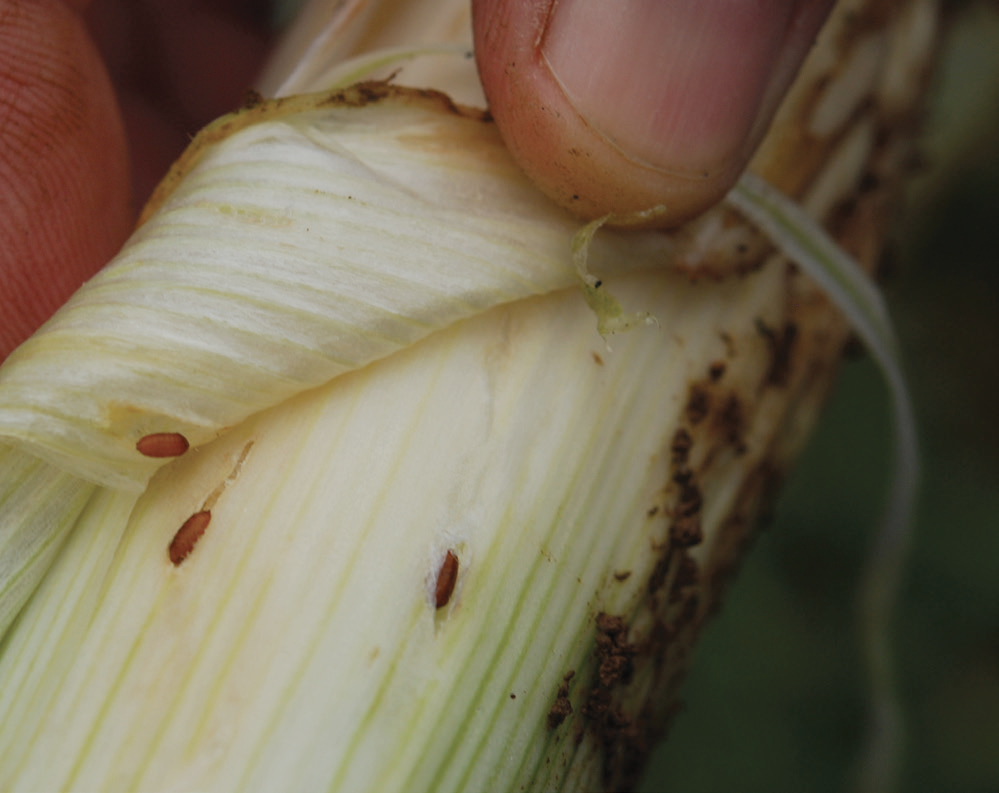
Jun 25, 2021
Rodale Institute tests organic tactics for fighting allium leafminer
The allium leafminer, an herbivore pest, was first reported in European countries such as Denmark, Sweden, Poland and the Mediterranean Basin in 1976 and now is widespread in Europe.
This invasive pest (Phytomyza gymnostoma Loew, Diptera: Agromyzidae) was first recorded on allium crop in Lancaster County, Pennsylvania, in December 2015 and expanded to many other counties in Pennsylvania and adjacent states (Fleischer, 2019) such as New Jersey, Maryland, New York and Massachusetts in 2019. With climate change, this pest is expected to spread to other states in the Northeast, causing damage to allium cropping.
Biology and Lifecycle
Allium leafminer (ALM) feeds on chives, onion, garlic and leeks. In Pennsylvania, this pest has two generations. The first generation appears in March- April, where the adults emerge from overwintering and mate within 48 hours.
The larvae pupate either in the bulb or in the soil until September/October in Pennsylvania when the second generation of ALM adults emerge and attack the fall-planted allium crops. The presence of larvae and pupae in green foliage and bulbs of chives, leeks, garlic and onion bulbs can lead to tremendous yield losses and is of major concern for Pennsylvania specialty crop growers.
Economic importance and damage

In Pennsylvania, sales of certified organic onion and garlic are $373,852 and $321,469, respectively. Unlike conventional growers, organic allium growers have limited options for registered organic pesticides to control or reduce the ALM pest impact.
All life stages of ALM have been shown to cause important economic impact in the above-mentioned states. The larvae mine the leaves, stalks and bulbs of allium plants, causing these parts to become distorted in shape, susceptible to bacterial and fungal infections. In addition, the soil and allium debris left in the fields become a suitable habitat for overwintering ALM and give rise to adults in the following spring.
To advise allium specialty crop growers on non-chemical practices for managing ALM, a field research trial was conducted over two years (2017-2019) at Rodale Institute, Berks County, Pennsylvania. The results presented here will provide allium growers with scientific-based information to make informative decisions in using practices that reduce losses to ALM and improve production of organic yellow onion.
This information is prepared based on this trial and provides experimental background information, viable tested strategies for managing ALM organically, and methods to increase onion production.
Management of allium leafminer
Background: Three yellow onion varieties (Cortland, Sedona and Talon) were evaluated in plots that were cropped previously to two cover crop mixtures. One cover crop mixture is referred to as ‘Myco’ and the other mixture as ‘Brassica’. The Myco mixture included hairy vetch, rye, oats, sunflower and white Dutch clover.
The roots of these cover crop plants form an association with soil mycorrhizal fungi. These fungi increase the root surface absorbing area of nutrients and water by 100 to 1,000 times. The ‘Brassica’ mixture included mustard, rape and daikon radish. These cover crop plants do not form mycorrhizal fungi association. However, the Brassica plants are nutrient scavengers from deep soil and release chemical compounds that may be toxic to soil-borne pests and weeds.
When Brassica cover crops are winterkilled in the fall, as in Pennsylvania and northern states, they decompose quickly, releasing chemical compounds such as thiocyanates into the and 20,934 kg/ha (18,680 lb/acre) in Myco. Therefore, the combined tactics of using plastic mulch and Brassica cover crops provided reductions in ALM damage and higher onion yields.
In Summary

The tested tactics have been deemed viable in reducing the impact of ALM damage in organic onion crops.
Organic and non-organic allium growers in Pennsylvania and the Northeast could benefit from adopting these non-chemical tactics, such as transplanting into soils that were cropped with Brassica cover crop mixture to increase sulfur and reduce the attraction of ALM adults, yellow sticky cards for early detection of ALM flights and floating row covers to protect young seedlings from ALM female adults laying eggs and consequently reduce allium yield losses. These multitactics can be incorporated into an integrated pest management program for managing ALM in the Northeast. Further research is needed to understand the benefits cover crop mixtures play in reducing pest damage and increasing allium crop production.
Acknowledgment
Funding for publication was made possible by the U.S. Department of Agriculture’s Agricultural Marketing Service, Orange County Community Foundation, the Pennsylvania Vegetable Growers Association, the Pennsylvania Vegetable Marketing and Research Program and Rodale Institute.
Resources
Fleischer, S. 2019. Allium leafminer: First emergence in Pennsylvania for 2019.
https://extension.psu.edu/allium-leafminer-first-emergence-in-pennsylvania-for-2019
Gardiner, J.B., N.J. Morra, C.V. Eberlein, P. D. Brown, and V. Borek. 1999. Allelochemicals released in soil following incorporation of rapeseed (Brassica napus) green manures. Journal of Agricultural and Food Chemistry 47: 3837–3842.
Lenz, M.E., J.L. Cox-O’Neill, K.E. Hales, and M.E. Drewnoski. 2019. Nutritive value change during the fall and late-summer-planted oats, radishes, and turnips. Crop Forage Turfgrass Management 5 (1): 1-6.
Petersen, J., R. Belz, F. Walker, and K. Hurle. 2001. Weed suppression by release of isothiocyanates from turnip-rape mulch. Agronomy Journal 93: 37–43.
Zinati, G.M., T. Valentine, J. Lang, and D. Kemper. 2020. Allium leafminer: A new culprit targeting allium crops in Pennsylvania and neighboring states. Rodale Institute, Kutztown, PA. 2 pages. https://mk0rodaleinstitydwux.kinstacdn.com/wp-content/uploads/Allium-leafminer-Web-article-UPDATED-AGAIN.pdf






